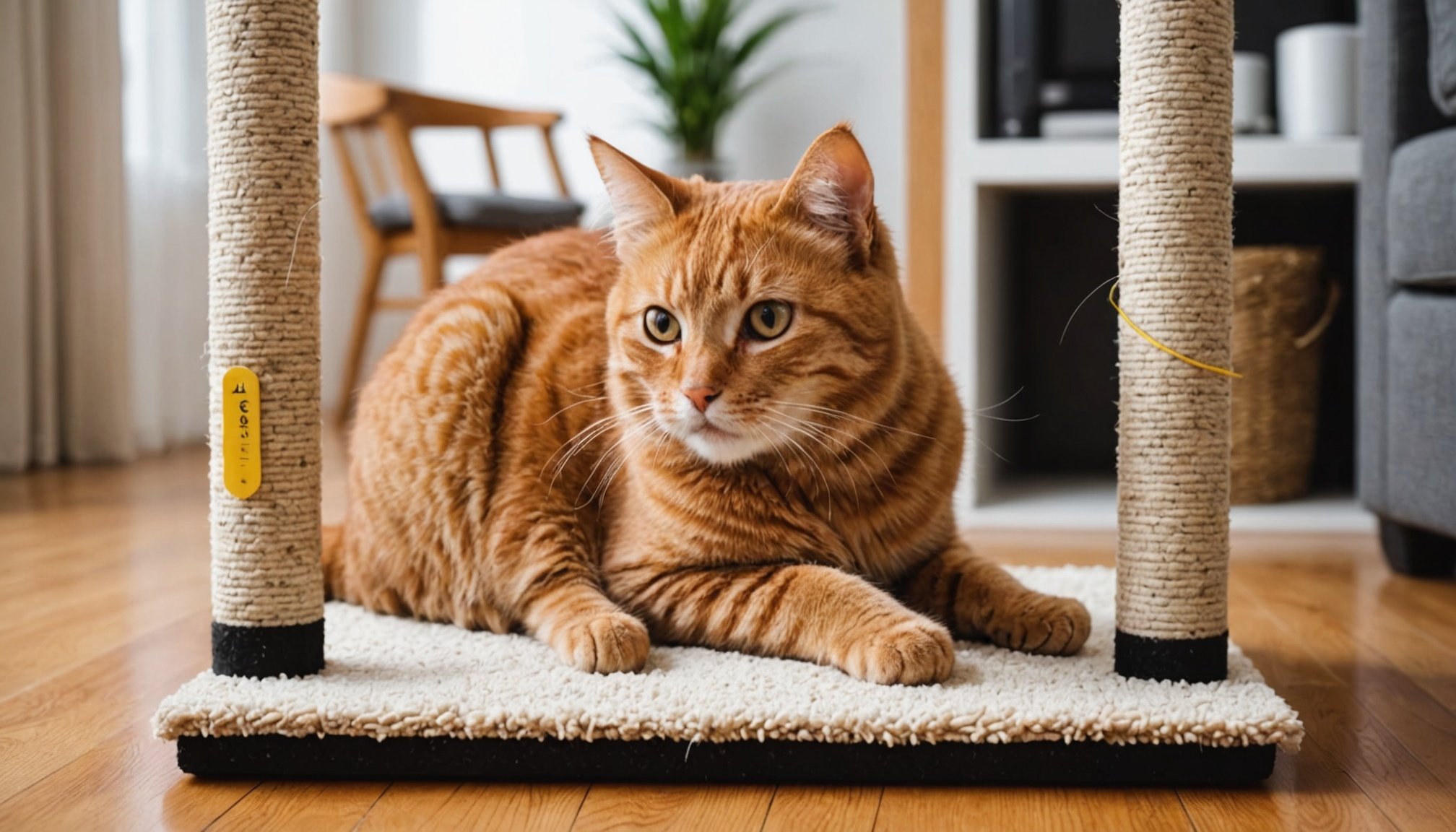Understanding Cat Scratching Behaviour
Cats have an inherent natural instinct to scratch, essential for their physical and mental well-being. This behaviour supports nail health, marking territory, and stretching muscles. Understanding this can help in managing where and how they scratch.
Allowing cats to scratch on furniture, however, can have unwanted consequences. With claws that naturally sharpen through scratching, furniture becomes susceptible to damage, leaving it torn and frayed. It’s not just about aesthetics; the frustration from repeated furniture damage can affect the human-animal bond.
Also to see : Ultimate guide to leash training your cat: proven techniques for perfect outdoor adventures
Recognizing signs of improper scratching behaviour is crucial in addressing issues early. If your cat continually scratches household objects, it might indicate a preference for certain materials or textured surfaces. Scratching in the same inappropriate areas, despite being offered alternatives, may suggest a lack of suitable options or a need for placement adjustment.
Redirecting improper scratching requires patience and understanding of feline behaviour. Through these insights into their intrinsic needs, one can better assess the importance of providing designated areas for scratching. Transitioning this behaviour from furniture to appropriate surfaces is the key to ensuring a harmonious home for both cat and owner. Employing this strategy can lead to a more satisfying environment for your furry friend.
Also read : Proven strategies for caring for your arthritis-affected cat: essential insights for feline wellbeing
Choosing the Right Scratching Post
Selecting the appropriate scratching posts is vital in managing your cat’s natural behaviors. There are diverse materials and styles: from sisal-covered posts for durability to carpeted ones for a softer feel. Cats may prefer certain textures, so experimenting to discover their preference can enhance the post’s appeal.
When considering types of scratching posts, it’s crucial to assess your cat’s size and the post’s height. Cats enjoy stretching as they scratch, so a post should be tall enough to allow full extension. Cat furniture like multi-level towers offers varied scratching surfaces and play options, which can be enticing for felines.
Additional factors include the post’s sturdiness and placement, impacting usability for different types of scratching posts. Cats are more likely to use posts that don’t wobble and are placed in high-traffic areas, making them a natural part of their routine.
A well-chosen scratching post becomes an investment in both the cat’s well-being and household harmony, preventing damage to household items. With the right options, your cat has a dedicated space to express their instinctual need, reducing frustration for both pets and owners.
Training Techniques to Redirect Scratching
Redirecting your cat’s scratching habits requires understanding behaviour modification and leveraging positive reinforcement. The initial step involves introducing positive reinforcement techniques, which motivate desired behaviour through rewards. Begin by observing your cat’s preferences for scratching surfaces and using these to your advantage.
A step-by-step guide can streamline the training process. Start by placing a scratching post near the areas where your cat usually scratches. Gently guide their paws to the post and praise or reward them with treats when they engage with it. This encourages a positive association with the designated scratching area.
Incorporating a reward system can further ensure success. Positive reinforcement, such as offering treats or verbal praise, bolsters your cat’s confidence and eagerness. Consistency is key; ensure you reinforce the behaviour consistently every time your cat uses the post. Patience and persistence are essential as cats may take time to adjust.
A successful modification of scratching behaviour hinges on understanding your cat’s motivations and catering to them with positive and encouraging strategies. Training should be a fun and rewarding experience for both pet and owner, strengthening the bond between you and fostering behaviour that’s compatible with home life.
Creating an Inviting Environment
Crafting an engaging cat habitat is crucial for encouraging your feline to scratch in designated areas. It’s not just about having a scratching post; strategic placement in high-traffic regions ensures that these posts become a natural part of your cat’s routine. Cats are drawn to busy areas, so placing posts where they frequently roam enhances their appeal, aiding in instinctive scratching encouragement.
Consider enriching this environment with toys and catnip. Catnip can act as a magnet, attracting cats by heightening their interest in the scratching post. Toys placed nearby add an interactive component, keeping the environment dynamic and stimulating. It’s about creating a harmonious and inviting space that caters to your cat’s natural urges and keeps them away from furniture.
Maintaining a clutter-free area is also important for a seamless flow of your cat’s habitat. An appealing space encourages exploration and regular use of the scratching post, reinforcing this behaviour positively. By fostering an environment rich with these elements, you can help your cat satisfy their need to scratch while protecting your home and enhancing everyone’s quality of life.
Monitoring Progress and Adjustments
Monitoring your cat’s scratching habits is essential to ensure your training methods are effective. Begin by observing where and how often your cat uses their scratching post. This helps track improvements and identify any persistent issues. Noticing a decrease in furniture scratching, for example, signifies progress while repeated lapses may suggest the need for adjustment.
In case of setbacks, patience combined with adapting the current methods is key. If the initial reward system wasn’t effective, consider tweaking it by introducing new incentives such as a different type of treat or toy. Repositioning the scratching post to an even more frequented area could reignite your pet’s interest.
Celebrate every milestone, no matter how small. Each successful use of the scratching post deserves recognition, reinforcing behaviour and boosting your cat’s confidence in the desired action. Ensure that positive reinforcement is consistent and caters to your cat’s unique preferences.
Recognising these behavioural patterns not only aids in immediate training goals but also enhances your long-term relationship with your cat, ensuring a cooperative and understanding household dynamic. Keep experimenting and adapting to find what works best for both you and your feline friend.
Seeking Professional Help if Necessary
Sometimes owners may need to enlist the support of a cat behaviorist or a veterinarian to address persistent scratching issues. If your cat continues to scratch furniture despite various interventions, professional guidance can be invaluable in restoring household harmony and supporting feline well-being.
A cat behaviorist evaluates underlying motives for scratching, such as stress, boredom, or health concerns. These experts often recommend tailored strategies aligning with your cat’s unique personality and needs. Treatment options may include behavioural interventions, altering the environmental setup, or suggesting new scratching posts.
Consultation with a veterinarian can rule out health-related causes for scratching, as issues like arthritis or nail disorders may lead to increased or altered scratching patterns. They might suggest behavioural interventions like pheromone therapy or medications if the problem persists.
Understanding the depth of behavioral issues with professional support ensures that any serious concerns are dealt with promptly. Not all scratching behaviour requires intervention, but recognising when to seek expertise discourages harmful cycles and promotes a better relationship between you and your feline friend. Engaging with professionals helps ensure your cat leads a satisfying and comfortable life, benefiting both you and your environment.











